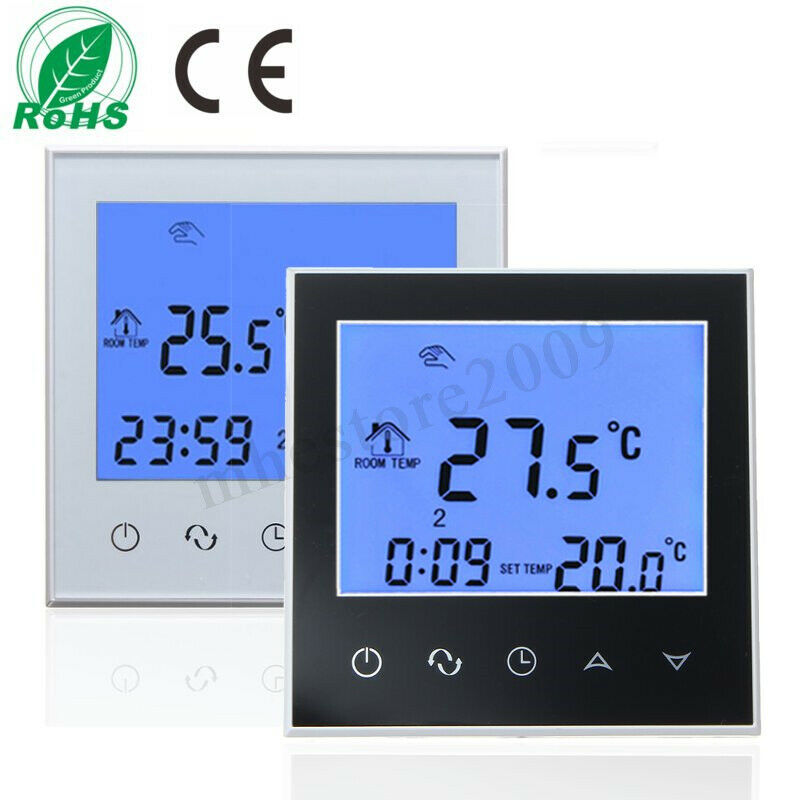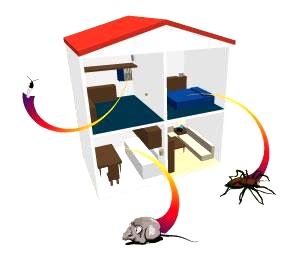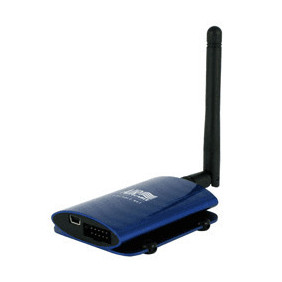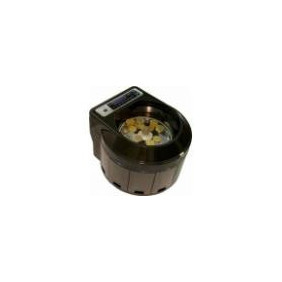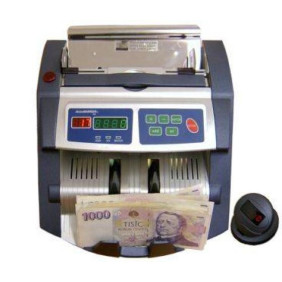FUNcube Dongle Pro+ l
AMSAT-UK FCD2 regulatory statements
Many thanks for purchasing the FUNcube Dongle Pro+! The FUNcube Dongle Pro+ is a software-defined radio (SDR)
covering all broadcast and amateur radio bands from 150kHz to 1.9GHz. With an SDR, many of the functions of a
traditional hardware-only radio are performed in software, such as demodulation, decoding and frequency conversion.
The FUNcube Dongle Pro+ hardware is designed to be very simple to set up, with the only connections being an antenna
connection and a USB connection. There are no physical controls on the FUNcube Dongle Pro+: all the settings for the
FUNcube Dongle Pro+ are controlled from host computer.
History
When the original FUNcube Dongle was designed, it proved far more popular than we ever anticipated. Then when we
had an opportunity to update the design for the FUNcube Dongle Pro+, we took into account the user feedback, and reengineered the device from scratch as a result.
Although there are numerous applications for FUNcube Dongle devices, first and foremost it is designed to be a radio
receiver for the FUNcube satellite. Let's briefly take a look at what the FUNcube satellite project is all about.
The FUNcube satellite is an AMSAT-UK project, and its primary goal is to encourage and educate young people in the
disciplines of radio, space, physics and electronics, and to support Science, Technology, Engineering and Mathematics
(STEM) initiatives would use practical demonstration.
The fundamental design criteria of FUNcube Dongles is to allow the target audience of primary and secondary school
students to directly receive data and voice from the FUNcube satellite. The satellite itself contains a materials science experiment linked to a 145MHz telemetry beacon that schools can
receive using a FUNcube Dongle, and can then decode and compare the telemetry data with results they obtain from
their own experiments in the classroom. In addition, the pupils can request their own messages, similar to SMS text
messages, to be sent into space and have them retransmitted by the FUNcube satellite as part of its telemetry data
Stream. The transmissions will be received globally by a network of thousands of FUNcube Dongle owners, and with
appropriate software, the messages will be distributed through a central telemetry datawarehouse.
The FUNcube satellite also includes an analogue voice transponder that can also be received with the FUNcube Dongle.
To produce a receiver suitable for school use, the device has to be both simple to install and to use. As the USB dongle is
nowadays so ubiquitous that form factor was chosen. In addition, it needs to be inexpensive. The FUNcube Dongle is
designed to connect between the antenna feed and a PC, and with the use of appropriate software, enable the display
and sharing of the received telemetry.
Further details of the FUNcube satellite and the project as a whole can be found here: http://funcube.org.uk
Initial Windows installation
Insert the dongle into a free USB port. Windows should proceed by automatically installing drivers:
If the balloon is clicked, the progress of installation can be tracked:This initial installation process takes from a few seconds up to a minute or so. If the dongle is inserted into a new port,
the process is repeated.
Application software
Two concurrently running applications are required to operate the FUNcube Dongle Pro+. One program (FCHid2.exe)
controls the tuning and other adjustments of the FUNcube Dongle Pro+ hardware. The second application performs the
demodulation of signals. There are many demodulation programs that are compatible with the FUNcube Dongle, and
for this example the SDRSharp program will be used.
Download FCHid from http://www.funcubedongle.com/MyImages/FCHid2Exe.zip
Download the SDRSharp program from http://sdrsharp.com/downloads/sdr-stable.zip
Unzip the programs into appropriate directories, and run both the FCHid and the SDRSharp executables. It May Be
convenient to create desktop icon shortcuts at this point if desired.
Every time SDRSharp is started, it is recommended that the following settings are adjusted for use with the FUNcube
Dongle Pro+:
Radio section: Check Swap I & Q
Audio section: Set Rate to 192k Sample/s
Audio section: Set Input to FUNcube Dongle V2.0
To start demodulation, press the Play button. For wideband FM (WFM) signals, almost the entire 192kHz is required for demodulation, and it is recommended that
that the demodulation's carrier (the vertical red line) is set to the downtown DC position. In this case, the FCHid frequency
is the same as the broadcast signal's frequency. In radio terms, this is a single, direct conversion receiver.
For narrow band signals, such as NFM, AM, SSB and CW, the downtown D.C. position is often avoided as there are
hardware artefacts such as local oscillator phase noise that can interfere with reception.
When receiving narrow band signals, avoiding the downtown D.C. position, there is a second conversion defined by the host
software's NCO (numerically controlled oscillator). The actual frequency of the received signal will be the first
conversion shown by FCHid, plus the Frequency shown by SDR Sharp. So, it's much like a conventional dual conversion
receiver, except the second conversion is performed in software, and that second conversion is at a much lower
frequency than would be used in a hardware receiver.
Usually it is unnecessary to adjust the settings in the FCHid program other than the frequency, although sometimes in
extremely strong signal conditions, adjusting the LNA, Mixer or IF gain may be beneficial.
Specifications
Frequency range 150kHz-240MHz and 420MHz-1.9GHz
Sensitivity Typically 12dB SINAD NBFM for 0.15uV at 145MHz
Reference oscillator 1.5ppm 26MHz
Sampling rate 192kHz
Bit depth 16 bits (32 bits used internally)
USB 1.x Male A Full Speed PC interface (12Mbps)
RF interface Standard SMA female (not Reverse Polarity [RP])
FUNcube Dongle Pro
AMSAT-UK FCD2 regulatory statements
FCC Statement
WARNING: modification of this device for receiving cellular radiotelephone service
Signals are prohibited by EU directives and federal laws.
Industry Canada statement
This device complies with Industry Canada's license exempt RSS standard(s). The operation of the device is
the following two conditions: (1) this device must not cause harmful interference, and (2) the device must
accept any external interference, including interference that may cause unwanted operation of the equipment.
Introduction
FUNcube Pro +! Dongle FUNcube Pro + is a software-defined radio (SDR)
covering all broadcasts and radio amateur bands from 150kHz to 1.9GHz. With SDR, many features
Traditional hardware only radio is done in software such as demodulation, decoding and conversion frequency.
Dongle FUNcube Pro + hardware is designed to be very easy to set up, with only connections have antennas
connection and USB connection. There are no physical checks on dongle FUNcube Pro +: all settings for
FUNcube Dongle Pro+ are controlled from the host computer.
History
When the original FUNcube Dongle was designed it proved far more popular than we ever thought. Then, when we
had the opportunity to update the pattern for Pro Dongle FUNcube +, we took into account user feedback, and reengineered the device from scratch as a result.
Although there are many other applications for the hardware key of the FUNcube device, it is primarily designed to
receiver for funcube satellite. Let's take a brief look at what the FUNcube satellite project is all about.
The FUNcube satellite is an AMSAT-UK project, and its main objective is to support and educate young people in
disciplines of radio, space, physics and electronics, and to support science, technology, engineering and mathematics
(STEM) initiatives using a practical demonstration.
The basic design criteria for FUNcube hardware keys is to enable the target audience of primary and secondary schools
students directly receive data and voice from funcube satellite. The satellite itself contains science experiment materials coupled with a 145MHz telemetry beacon that schools can
received using the FUNcube hardware key, and can then decode and compare telemetry data with the results they receive from
custom experiments in the classroom. In addition, pupils can request their own messages, similar to sms text
messages to be sent into space and have them re-transmitted from the FUNcube satellite as part of their telemetry data
Stream. Transmissions will be taken global networks of thousands of Dongle owners FUNcube, Inc.
appropriate software, the messages will be distributed through the central telemetry data warehouse.
FUNcube satellite and analog voice transponder, which can also be taken with funcube adapter.
To produce a receiver suitable for school use, the device must be so easy to install and use. Since the USB dongle is not
today so ubiquitous, was chosen to form a factor. In addition, it must be cheap. FUNcube's Dongle
designed to connect between antenna feed and PC, and using appropriate software, allow the display of
and sharing of received telemetry.
Further details on the FUNcube satellite and the project as a whole can be found here: http://funcube.org.uk
First windows installations
Insert the dongle into a free USB port. Windows should proceed with the automatic installation of drivers:
If the balloon clicks, the installation progress can be tracked: This first installation process takes from a few seconds to one minute or so. If the dongle is inserted into a new port,
process is repeated.
Application Software
Two parallel running applications are required to operate dongle FUNcube Pro +. One program (FCHid2.exe)
controls debugging and other modifications to dongle FUNcube Pro + hardware. The second application performs
demolition of the signal. There are many demodulation programs, kt


